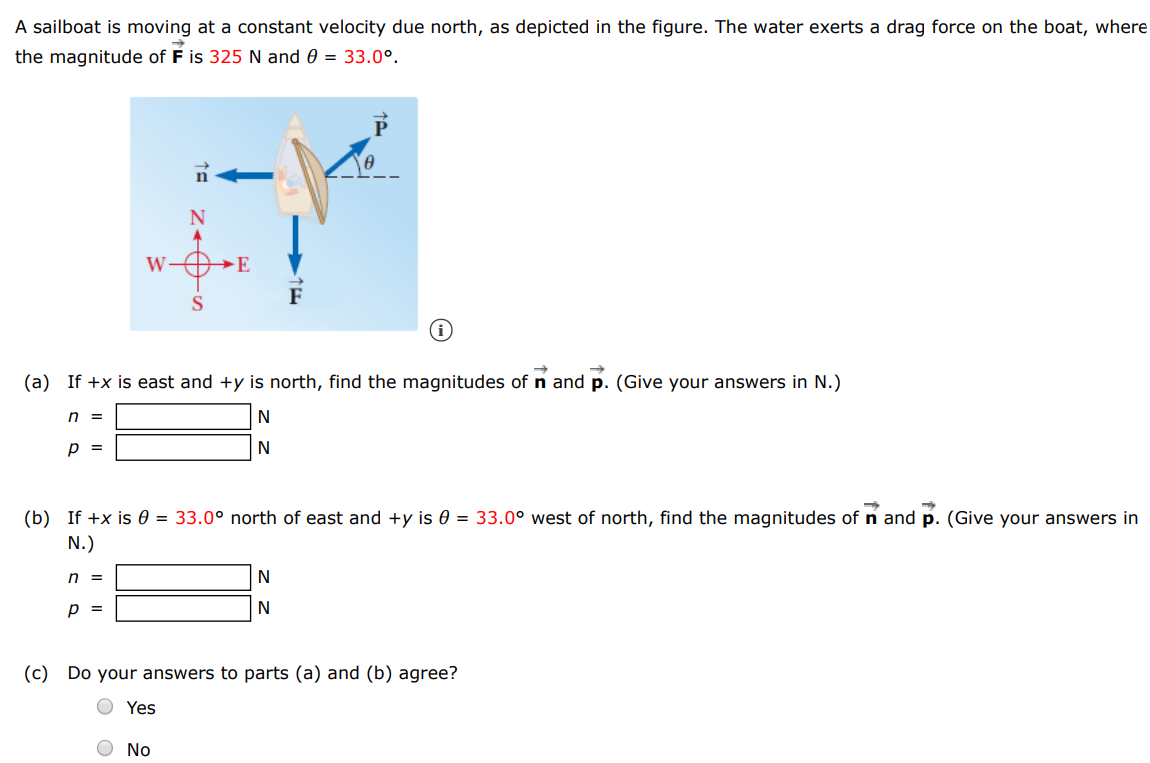A sailboat is moving at a constant velocity due north, as depicted in the figure. The water exerts a drag force on the boat, where the magnitude of F→ is 325 N and θ = 33.0∘. (a) If +x is east and +y is north, find the magnitudes of n→ and p→. (Give your answers in N. ) n = N p = N (b) If +x is θ = 33.0∘ north of east and +y is θ = 33.0∘ west of north, find the magnitudes of n→ and p→. (Give your answers in N. ) n = N p = N (c) Do your answers to parts (a) and (b) agree? Yes No



You'll get a detailed, step-by-step and expert verified solution.
 Work With Experts to Reach at Correct Answers
Work With Experts to Reach at Correct Answers